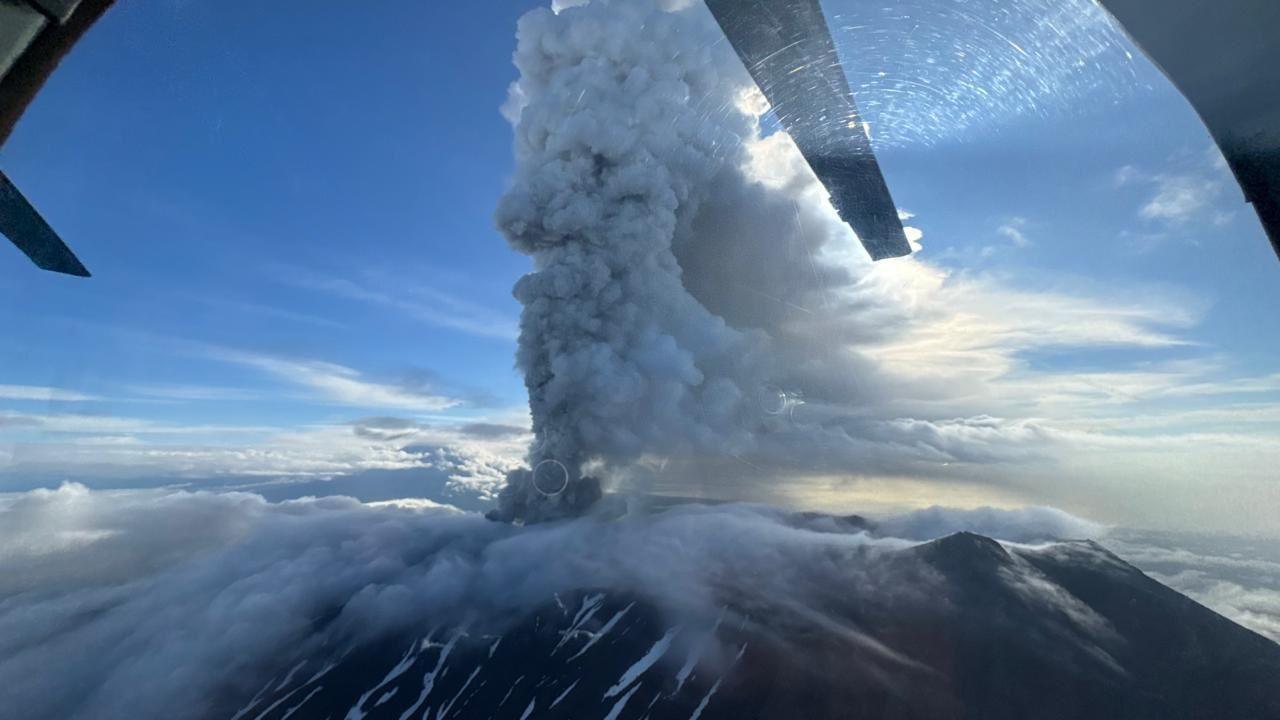
The Krasheninnikov Volcano erupts in Russia's Kamchatka Peninsula for the first time in over 600 years, days after a powerful 8.8-magnitude earthquake triggered widespread tsunami warnings. Image: BBC News.
(The Post News)– The centuries-old Krasheninnikov Volcano erupted overnight on the Kamchatka Peninsula of Russia, its first reported eruption in over 600 years. The volcanic display came after a colossal 8.8 magnitude earthquake rocked the area, sending tsunami warnings across the Pacific from Japan to Chile.
Kamchatka Volcanic Eruption Response Team leader Olga Girina said that this is the Krasheninnikov Volcano’s first reported eruption in 600 years. Girina added that with a 40-year range of error, the last known lava effusion occurred in 1463, and nothing has been reported since.
The nighttime eruption pushed an ash cloud up to 6,000 meters above ground level, Russia’s Ministry for Emergency Situations reported. The 1,856-meter volcano’s ash cloud moved east over the Pacific Ocean, but officials said that no inhabited areas were in its way.
The Bayonnaise eruption is the consequence of a series of intense geological activities in the region. The powerful earthquake last week, whose epicenter was near Kamchatka, sent tsunami warnings as far as Japan, the Philippines, America’s west coast, and even French Polynesia and Chile. This followed heightened activity in Klyuchevskoy, Eurasia’s most productive and one of its tallest volcanoes.
The officials mention that according to geologists, the recent seismicity can somehow be related to it. According to Girina, the Krasheninnikov eruption is most likely the result of a tectonic process that began with the large earthquake on Wednesday.
A 7.0 earthquake slammed the neighboring Kuril Islands on Sunday, exacerbating the tragedy, and Russia’s emergency authorities issued and later revoked a tsunami warning for sections of Kamchatka. Although wave heights were measured as insignificant, authorities had asked coastal dwellers who resided along coastlines to keep away from beachlines for precautionary reasons. The active island chain stretching south from Kamchatka, the Kuril Islands, is in waiting for potential aftershocks in the coming weeks.
Russia, following the eruption of Krasheninnikov, has issued an Orange Aviation Code, or severe threat to air traffic from ash clouds. The pilots and air traffic controllers in the area have been alerted to remain vigilant. Authorities closely monitor Kamchatka’s volcanic and seismic activity and the island arc of the Kurils since geologists say that the chain of activity may not yet be completed.



